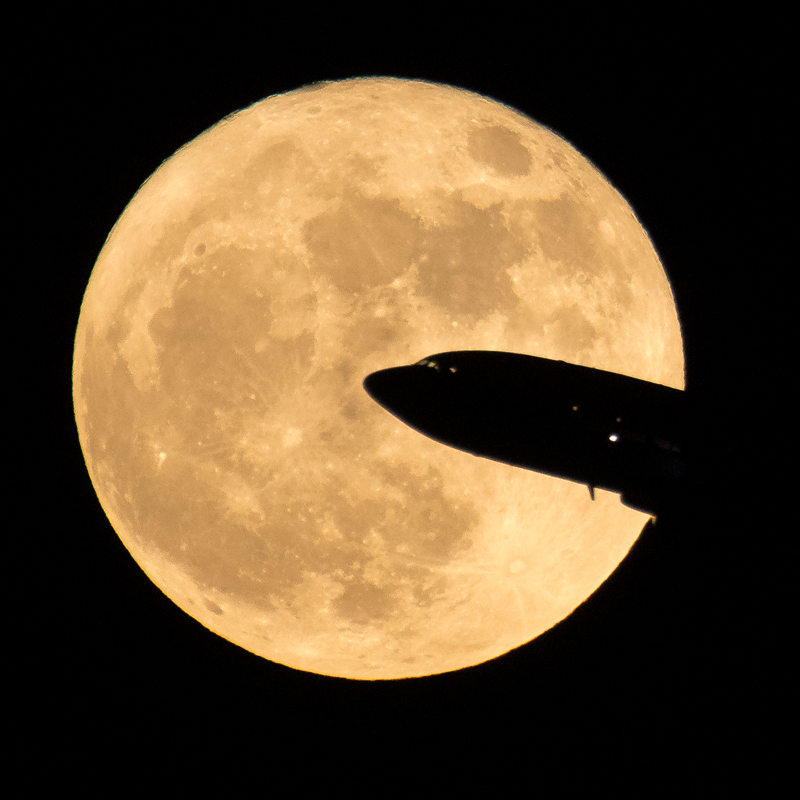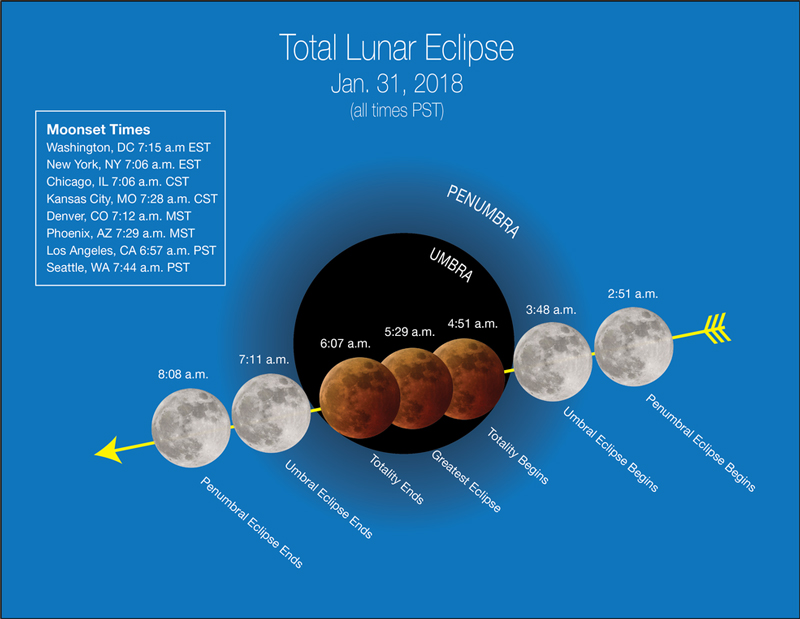


The moon's very busy day
Photo by NASA/Bill Ingalls January 26, 2018
Super Blue Blood Moon can be seen on western horizon early Jan. 31
Hold all your calls on Wednesday, Jan. 31, dear Earthlings. Your moon has a full agenda already.
It will be a Blue Moon, a Super Moon and a Blood Moon - all on the same day.
"It's actually a busy month for the moon," said Judi Provencal, astronomy professor at the University of Delaware and resident astronomer at the nearby Mount Cuba Astronomical Observatory.
And since this day is making it into national news accounts, it's useful to know what it all means. So here are your Moon Day Talking Points:
A "blue moon" is what you call the second full moon in the same month. In this case, January started off with a full moon (also called the "Wolf" moon, since it was January's first full moon) and it's winding up with a blue moon - a second full moon.
A "super moon" is what you call a full moon when its orbit comes closest to the Earth. It might look 10-11 percent bigger than an ordinary full moon.
A "blood moon" is what you call a moon during a full lunar eclipse, when the Sun, the Earth and the moon are in alignment. The moon is in the Earth's shadow. The Earth's atmosphere is responsible for the reddish color, as the atmosphere tends to scatter blue light and let red light through.
All of that happens from late Jan. 30 to early Jan. 31, depending on your location. If you or yours happen to be in Alaska, the northwest part of North America, Australia or the Eastern half of Asia, a full lunar eclipse will be visible. On the East Coast of the United States, a much smaller portion of the eclipse will be visible.
If you're on the University of Delaware campus in Newark, Delaware, a partial lunar eclipse begins at 5:51 a.m. A portion of the moon starts getting red at around 6:48 a.m. and reaches its maximum redness here (less than a third of the moon) at 7:06 a.m. By then, the moon will be near the horizon, though, because it sets at 7:09 a.m. So be in a place where you have a clear view of western horizon if you want to see any part of the lunar eclipse.
Unlike the solar eclipse that passed over the United States last October - a stunning event that required viewers to use special glasses or equipment to prevent eye injury - no special gear is needed to view a lunar eclipse.
While this convergence of events is fairly uncommon - it last occurred on March 31, 1866, according to Provencal - it's not exactly phenomenal, at least not in the astronomical sense.
"And it's not a random thing," she said. "We've known this would happen for years and years and years. Probably the Mayans even knew, though they didn't know what it was."
It takes a little more than 27 days for the moon to make one orbit around the Earth, so it is not uncommon to have a blue moon.
A super moon is not uncommon either, coming as it does on one extreme of its orbit. The closest it comes to Earth is called its "perigee," when it will be about 221,559 miles away, about 16,000 miles closer than average. (The farthest it gets from Earth is called its "apogee," about 251,968 miles away.) But these are common spots for the moon to be. Of the 12 or 13 full moons in any given year, three or four will be super moons, Provencal said, but it's not a remarkable difference in size. Most people can barely detect it.
A lunar eclipse is great to see in its fullness. Its entire surface will look blood red as the Earth's atmosphere becomes a lens, bending the red light and scattering the blue.
What such events might do for astronomers is give them a bit of a break from the moon, Provencal said. Astronomers who are observing on that night will not have to deal with the light reflecting off a typical full moon, so it might be easier to detect fainter things such as a supernova, she said.
After Wednesday's busy day, the moon takes it easy throughout February. Its next full day is March 1.

Contact Us
Have a UDaily story idea?
Contact us at ocm@udel.edu
Members of the press
Contact us at 302-831-NEWS or visit the Media Relations website

